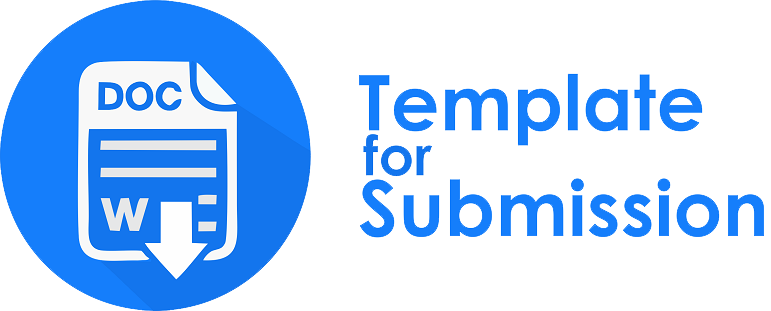ETHNOMATHEMATIC STUDY: NUMBER SYSTEM AND CULTURAL MEANING IN THE SASAK TRIBE COMMUNITY
Abstract
The uniqueness and cultural diversity of traditional communities as reflected in ideas, activities and artifacts can be studied and used as a source of learning mathematics. Most people view that mathematics is not related to culture or is culturally independent. The development of mathematics in society through cultural activities can be studied through ethnomathematics studies that can bring mathematics closer to student culture. Thus, this study aims to explore the number system and cultural meaning that developed in the Sasak people which can be used as a source of learning mathematics on the island of Lombok. This research is a research with ethnographic method. Research data was collected through observation, literature study, and interviews with cultural practitioners, traditional chief leaders, traditional leaders, Sasak cultural researchers and humanists. The results of this study indicate that the development of the number system has been developing for a long time in the Sasak people. Counting activities (bejinah) use arithmetic operations as is done in general but with local terms, namely total (rombok), less (sedik), times (kali) and divide (bagi). The developing number system is understood as a number in quantitative and qualitative form, in unit or set numbers. There are 5 types of unit or set numbers known by the Sasak people, namely bond units, measuring units for solid objects, measuring units for liquid objects, area units and length units. The mathematical concepts found in the activities of the Sasak people can be used as a source of learning and as a starting point in learning mathematics
Downloads
References
Abdullah, A. S. (2017). Ethnomathematics in perspective of sundanese culture. Journal on Mathematics Education, 8(1), 1–16. https://doi.org/10.22342/jme.8.1.3877.1-15
Acharya, B. R. (2020). Promoting Inclusive Mathematics Classroom Practices in the Schools of Nepal: an Ethnographic Inquiry. International Journal of Research -GRANTHAALAYAH, 8(3), 223–237. https://doi.org/10.29121/granthaalayah.v8.i3.2020.146
Alghar, M. Z., Susanti, E., & Marhayati, M. (2022). Ethnomathematics: Arithmetic Sequence Patterns of Minangkabau Carving on Singok Gonjong. Jurnal Pendidikan Matematika (JUPITEK), 5(2), 145–152. https://doi.org/10.30598/jupitekvol5iss2pp145-152
Barton, B., Poisard, C., & Domite, M. D. C. (2006). Cultural Connections and Mathematical Manipulations. For the Learning of Mathematics, 26(2), 21–24.
Bender, A., & Beller, S. (2011). Cultural variation in numeration systems and their mapping onto the mental number line. Journal of Cross-Cultural Psychology, 42(4), 579–597. https://doi.org/10.1177/0022022111406631
D’Ambrosio, U. (2016). An overview of the history of Ethnomathematics. In Milton Rosa, U. D’Ambrosio, D. C. Orey, L. Shirley, W. V. Alangui, P. Palhares, & M. E. Gavarrete (Eds.), Current and Future Perspectives of Ethnomathematics as A Program (pp. 5–10). Camp. Springer US. https://doi.org/https://doi.org/10.1007/978-3-319-30120-4_3
d’Errico, F., Doyon, L., Colagé, I., Queffelec, A., Le Vraux, E., Giacobini, G., Vandermeersch, B., & Maureille, B. (2018). From number sense to number symbols. An archaeological perspective. Philosophical Transactions of the Royal Society B: Biological Sciences, 373(1740). https://doi.org/10.1098/rstb.2016.0518
Ernest, P. (1991). The Philosophy of Mathematics Education. Falmer Press.
Fatrurrahman, L. A. (2022). Informasi sistem bilangan yang berkembang pada masyarakat suku Sasak [Information on the number system that developed in the Sasak people]. Personal Communication.
Fauzi, L. M., & Gazali, M. (2022). The characters of the traditional residence of Sasak tribe based on sikut awak: An ethnomathematics study. Jurnal Elemen, 8(1), 55–65. https://doi.org/10.29408/jel.v8i1.4143
Fauzi, L. M., Gazali, M., & Fauzi, A. (2021). Ethnomathematics: A mathematical exploration on the layout of tui gubuk and the architecture of Segenter Traditional House. Jurnal Math Educator Nusantara, 7(2), 135–148.
Fauzi, L. M., Gazali, M., Fauzi, A., Wardi, Z., & Endriana, N. (2022). Realistic mathematics education: Building mathematical conceptions in sasak culture. Jurnal Math Educator Nusantara: Wahana Publikasi Karya Tulis Ilmiah di Bidang Pendidikan Matematika, 8(2), 155-167.
Fauzi, L. M., Hanum, F., Jailani, & Jatmiko. (2022). Ethnomathematics : Mathematical ideas and educational values on the architecture of Sasak traditional residence. International Journal of Evaluation and Research in Education (IJERE), 11(1), 250–259. https://doi.org/10.11591/ijere.v11i1.21775
Foronda, C. (2020). A Theory of Cultural Humility. Journal of Transcultural Nursing, 31(1), 7–12. https://doi.org/10.1177/1043659619875184
Gedarip, R. (2022). Makna budaya yang berkembang berdasarkan aktifitas penghitungan yang berkembang pada masyarakat suku Sasak [The cultural meaning that develops is based on the counting activity that develops in the Sasak people]. Personal Communication.
Hardiani, N., & Putrawangsa, S. (2019). Etnomatematika: Tradisi pengukuran masyarakat suku Sasak dan potensi pengintegrasiannya dalam pembelajaran matematika. AKSIOMA: Jurnal Program Studi Pendidikan Matematika, 8(1), 159-174.
Irawan, L. A. (2022). Penghitungan penanggalan suku Sasak [Calculation of the calendar of the Sasak tribe]. Personal Communication.
Lekas, H. M., Pahl, K., & Fuller Lewis, C. (2020). Rethinking Cultural Competence: Shifting to Cultural Humility. Health Services Insights, 13, 4–7. https://doi.org/10.1177/1178632920970580
Milenia, B. B., Suryaningrum, C. W., & Rhomdani, R. W. (2022). Using Ethnomathematics From Batik Jember To Create Electronic Modules. Jurnal Pendidikan Matematika (JUPITEK), 5(2), 132–137. https://doi.org/10.30598/jupitekvol5iss2pp132-137
Novitasari, D., Sridana, N., & Tyaningsih, R. Y. (2022). Eksplorasi Etnomatematika dalam Alat Musik Gendang Beleq Suku Sasak. Indiktika: Jurnal Inovasi Pendidikan Matematika, 5(1), 16-27.
Ogomaka, P. M. C. (2013). Traditional Igbo numbering system: a reconstruction. Africa Development, 30(3), 35–47. https://doi.org/10.4314/ad.v30i3.22228
Pradhan, J. B. (2017). Mathematical Ideas in Chundara Culture: Unfolding a Nepalese Teaching and Learning System. In Ethnomathematics and Its Diverse Approaches for Mathematics Education (pp. 125–152). Springer. https://doi.org/10.1007/978-3-319-59220-6_6
Riajim, A. (2022). Bentuk dan konsep penghitungan yang berkembang pada masyarakat suku Sasak [The form and concept of counting developed in the Sasak people]. Personal Communication.
Roe, M. (2018). Developing Shared Socio-Cultural Values in Green Infrastructure Planning Roe MH. Developing Shared Socio-cultural Values in Green Infrastructure Planning . In : International Workshop on Brownfield regeneration 2016 with Green Infrastructure ( GI ): Crea. Cybermedia Center, Osaka University, Japan, August.
Roger L Cooke. (2012). The history of mathematics: a brief course (Thired Edi). New York, NY: John Wiley and Sons, Inc.
Rosa, M., & Orey, D. C. (2016). State of the art in Ethnomathematics. In M. Rosa, U. D’Ambrosio, D. C. Orey, L. Shirley, W. V. Alangui, P. Palhares, & M. E. Gavarrete (Eds.), Current and future perspectives of Ethnomathematics as a program (pp. 11–37). Camp. Springer US. https://doi.org/https://doi.org/10.1007/978-3-319-30120-4_3
O'Shaughnessy, D. M., Gibson, E., & Piantadosi, S. T. (2021). The cultural origins of symbolic number. Psychological review.
Shirley, L., & Palhares, P. (2016). Ethnomathematics and its diverse pedagogical approaches. In Current and future perspectives of ethnomathematics as a program (pp. 25–44). Cham: Springer. https://doi.org/https://doi.org/10.1007/978-3-319-59220-6
Spradley, J. P. (2016). The Ethnographic Interview. In The SAGE Encyclopedia of Communication Research Methods. Reissued Long Grove, IL: Waveland Press, Inc. https://doi.org/10.4135/9781483381411.n168
van Prooijen, J. W., & Song, M. (2021). The cultural dimension of intergroup conspiracy theories. British Journal of Psychology, 112(2), 455–473. https://doi.org/10.1111/bjop.12471
Vaughan, R. S., & Edwards, E. J. (2020). Executive function and personality: The moderating role of athletic expertise. Personality and Individual Differences, 161(November 2019), 109973. https://doi.org/10.1016/j.paid.2020.109973
Wierzbicka, A. (2007). English: Meaning and Culture. New York : Oxford University Press. https://doi.org/10.1093/acprof:oso/9780195174748.001.0001
Yamin, M. (2022). filosofi dan makna simbolis dari bilangan berdasarkan keyakinan masyarakat suku Sasak [The philosophy and symbolic meaning of numbers is based on the beliefs of the Sasak people]. Personal Communication.

Copyright (c) 2023 Lalu Muhammad Fauzi, Shahibul Ahyan, Ahmad Rasidi, Zaotul Wardi, Muhammad Gazali

This work is licensed under a Creative Commons Attribution-NonCommercial-ShareAlike 4.0 International License.
License and Copyright Agreement
By submitting a manuscript to Jurnal Pendidikan Matematika (JUPITEK), the author(s) certify and agree to the following terms:
- Originality and Authority: The submitting author is authorized by all co-authors to enter into this agreement. The manuscript describes original work that has not been published previously in a peer-reviewed journal, nor is it under consideration for publication elsewhere.
- Approval: Its publication has been approved by all author(s) and by the responsible authorities of the institutions where the work was carried out.
- Rights: The authors secure the right to reproduce any material that has already been published or copyrighted elsewhere.
- Licensing and Copyright: Authors retain the copyright to their work.
- License Grant: The authors grant Jurnal Pendidikan Matematika (JUPITEK) the right of first publication, with the work simultaneously licensed under the Creative Commons Attribution-NonCommercial-ShareAlike 4.0 International (CC BY-NC-SA 4.0).
- Self-Archiving: Authors are permitted and encouraged to deposit the published version of their article in institutional repositories, on their personal websites, and other academic platforms, with proper acknowledgment of its initial publication in Jurnal Pendidikan Matematika (JUPITEK).





.png)


